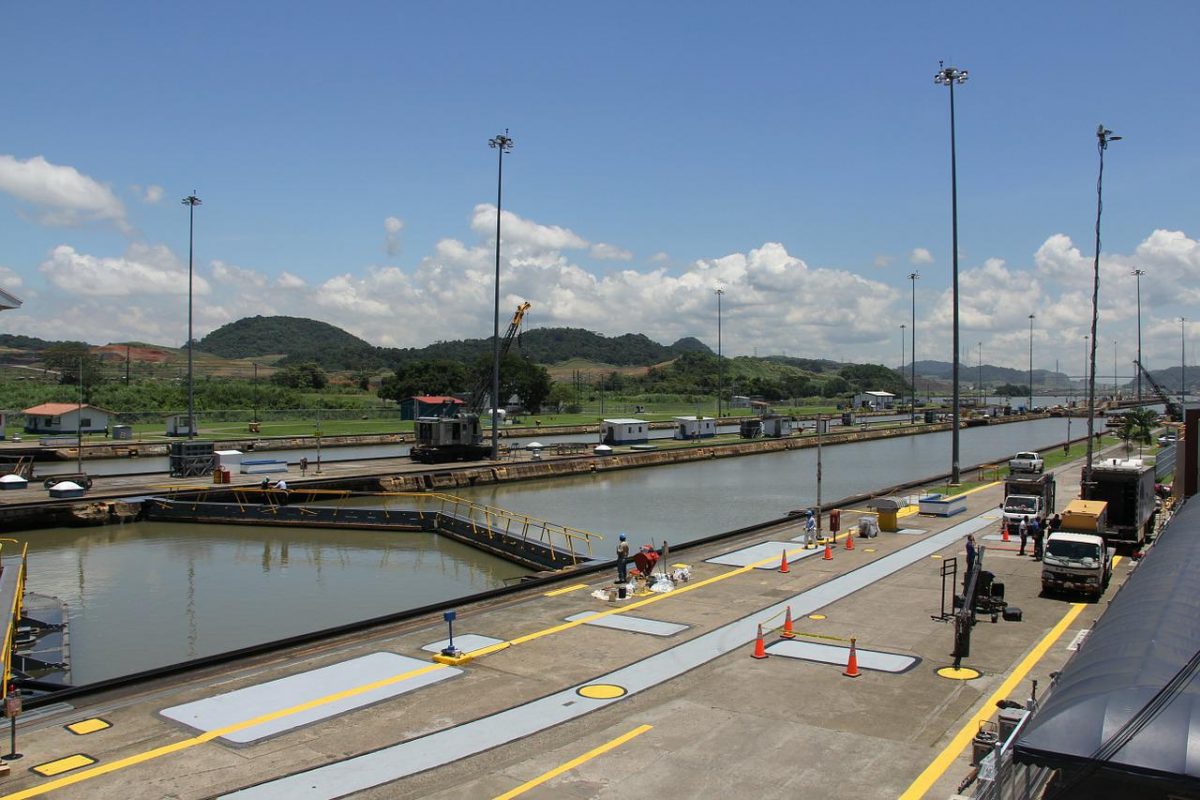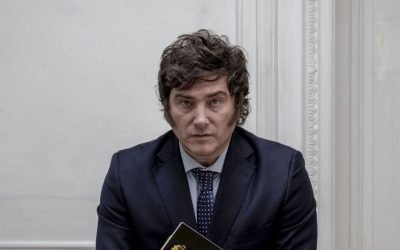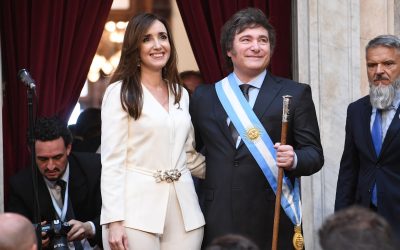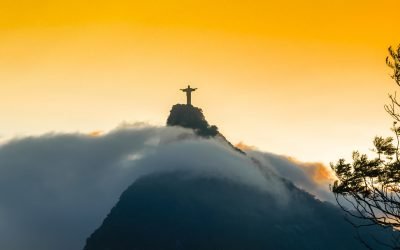In December and January, the television screens across America flickered with pictures of United States’ soldiers patrolling the streets of Panama City. Throngs of cheering Panamanians were shown waving the Stars and Stripes and singing the “Star-Spangled Banner.” The “Maximum Leader,” Manuel Noriega, appeared on the cover of Newsweek holding his prisoner mug-shot number.
At the White House, President Bush was aglow at the achievement of all the goals for which 24,000 troops were sent into combat in Central America. Administration officials assured the press that the United States was not going to use the Panama affair as a precedent for other Latin American invasions. They insisted that Panama was a special case.
Panama is a special case, but not in the sense that U.S. officials probably mean; their historical horizon extends back in time no further than yesterday’s public opinion polls and no further into the future than the next election.Panama is a special case because its very existence as a nation is bound up with American foreign policy. Its birth occurred as the result of U.S. imperialism at the turn of the century and as part of a gigantic American public-works project.
In 1903 America was basking in the glow of having entered the arena of imperial world politics. The year 1898 had seen the Spanish-American War, out of which Cuba became independent under U.S. “protection” and Puerto Rico was annexed. In Asia, American forces had completed the brutal suppression of an independence movement in the Philippines; the U.S. took possession of the islands instead of giving the Philippine people the freedom they had been promised for their assistance in fighting the Spanish forces at Manila.
Having now become a Pacific power, America needed an easy and reliable route for moving naval vessels from one coast to the other — or so President Theodore Roosevelt was fervently convinced. And out of this vision of America as a two-ocean power, Panama was born.
There had been several attempts to build a canal across the isthmus of Panama in the 19th century, the most famous by Ferdinand de Lesseps, the builder of the Suez Canal. All of them had failed because of jungle diseases and engineering difficulties.
At the turn of the century, Panama was a province of Colombia. A French-owned company, The New Panama Canal Company, held a concession from the government of Colombia to build a canal across the isthmus. Though virtually bankrupt and unable to find any private financial backing to continue construction, the company stockholders viewed the concession as valuable.
They knew that the U.S. government was interested in purchasing the concession and building a canal at American taxpayers’ expense.
The initial selling price of $109,141,400 was viewed as too high, and a U.S. commission suggested a canal across Nicaragua instead. The company responded by hiring a New York lawyer wit h close connections with the Republican Administration as a lobbyist and contributing $60,000 to the Republican campaign fund. They also lowered their selling price to $40,000,000. The U.S. commission revised its recommendation and advised selecting the Panama route.
In January 1903 Congress voted to buy the concession and to pay the Colombian government $10,000,000 plus an additional $250,000 annually. The Colombian Senate rejected the offer. President Roosevelt was outraged, declaring that we may have to give a lesson to these jack rabbits.”
Some of the stockholders of The New Panama Canal Company, seeing their $40,000,000 going out the window, met at the Waldorf Astoria Hotel in New York City. Their plan was to arrange a “revolution” in Panama, with the new, independent government accepting the terms of the sale. One of the stockholders, Philip Bunau-Varilla, advanced $250,000 to a group in Panama for the revolution. The “revolutionaries” were assured that President Roosevelt had said he would be “delighted if Panama were an independent state.”
With the money, a force of about a hundred men was organized in Panama; but at the last minute the leaders insisted on U.S. protection for their revolt. They were promised that, just by “coincidence”, a ship-of-war, the USS Nashville, would be arriving at Colon on the Caribbean side of the isthmus on November 2, 1903.
On November 3, the revolt began. A force of 450 Colombian troops had arrived by gunboat at Colon the night before to suppress any rebellion. The commander of the Nashville, however, had received orders to “Prevent their [the Colombian troops] landing if, in your judgment, the landing would precipitate a conflict.” Since a conflict would only arise if the Colombian government attempted to put down the insurrection, these orders, in fact, meant that U.S. military forces were used to prevent Colombia from maintaining its own territorial integrity.
Panamanian independence was declared on November 4. The U.S. government recognized the new state on November 6, and Philip Bunau-Varilla was appointed Panamanian minister to the United States. On November 18, a treaty was signed in Washington between the United States and Panama giving the U.S. a ten-mile wide “canal zone”, for which the new Panamanian government received the $10,000,000 originally offered to Colombia and the promise of the $250,000 a year. The New Panama Canal Company, in turn, completed the sale of its concession to the U.S. and pocketed the $40,000,000.
Work on building the canal began shortly afterwards under the supervision of the U.S. Army Corps of Engineers. The Panama Canal opened for traffic in 1914. Total construction costs were $400,000,000, a hefty sum at the time, considering that in fiscal year 1914, all U.S. government expenditures only totaled about $720,000,000.
Panama symbolizes the contradictions in American foreign policy. Verbally pledged to the principles of individual freedom and non-intervention, the United States has rarely practiced either around the world. The American government has had few qualms in manipulating the events in other nations to serve its own purposes.
Yet, what are the consequences? The U.S. Constitution is weakened a little bit more — after all, it is Congress that is supposed to declare war and thereby justify the use (and death) of American soldiers on distant shores. Economic freedom is eroded a little bit more — after all, the costs of war and reconstruction must be paid for, and either taxes (or budget deficits) must go up or taxes (or budget deficits) remain higher than otherwise would have been the case. Corruption and political privilege increase a little bit more — after all, whenever government spends, there are those who desire to be on the receiving end, and foreign adventures are a useful way of justifying it while waving the flag.
And socialism, the great enemy of individual freedom and private enterprise, is strengthened. The Panama Canal, from its beginning, was an U.S. nationalized company. Dissatisfied with the fact that the private sector found the risks and the costs of building a canal too high in relation to the prospective market demand and profits to be made, President Roosevelt insisted on government action. Resources were socialized through taxation, and government went into the canal business. If socialism is good for America in Panama, then what is wrong with some socialism at home? Always, of course, for noble and worthy causes. One economic intervention sets the precedent and rationale for others.
And now at the end of the 20th century, when the world is turning away from socialism and the idea of government planning, has the United States even suggested the privatization of one of its largest socialist enterprises? No. Instead, the U.S. government will completely transfer state ownership of the canal to the Panamanian government in the year 2000. Such is the conduct of the global bulwark of capitalism.
When the cheering has stopped and the flags are folded and put away, the lasting contribution of the Panama intervention will be seen to be that a little bit more of our freedom has been clipped off the coin of liberty by our own government.
Made available by Future of Freedom Foundation.




